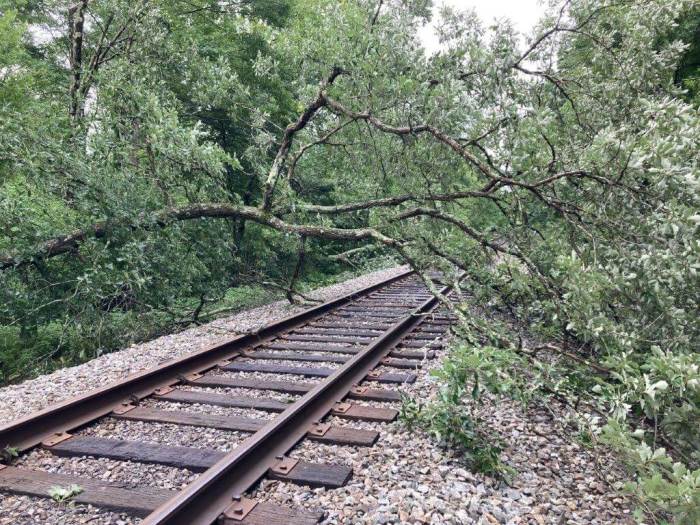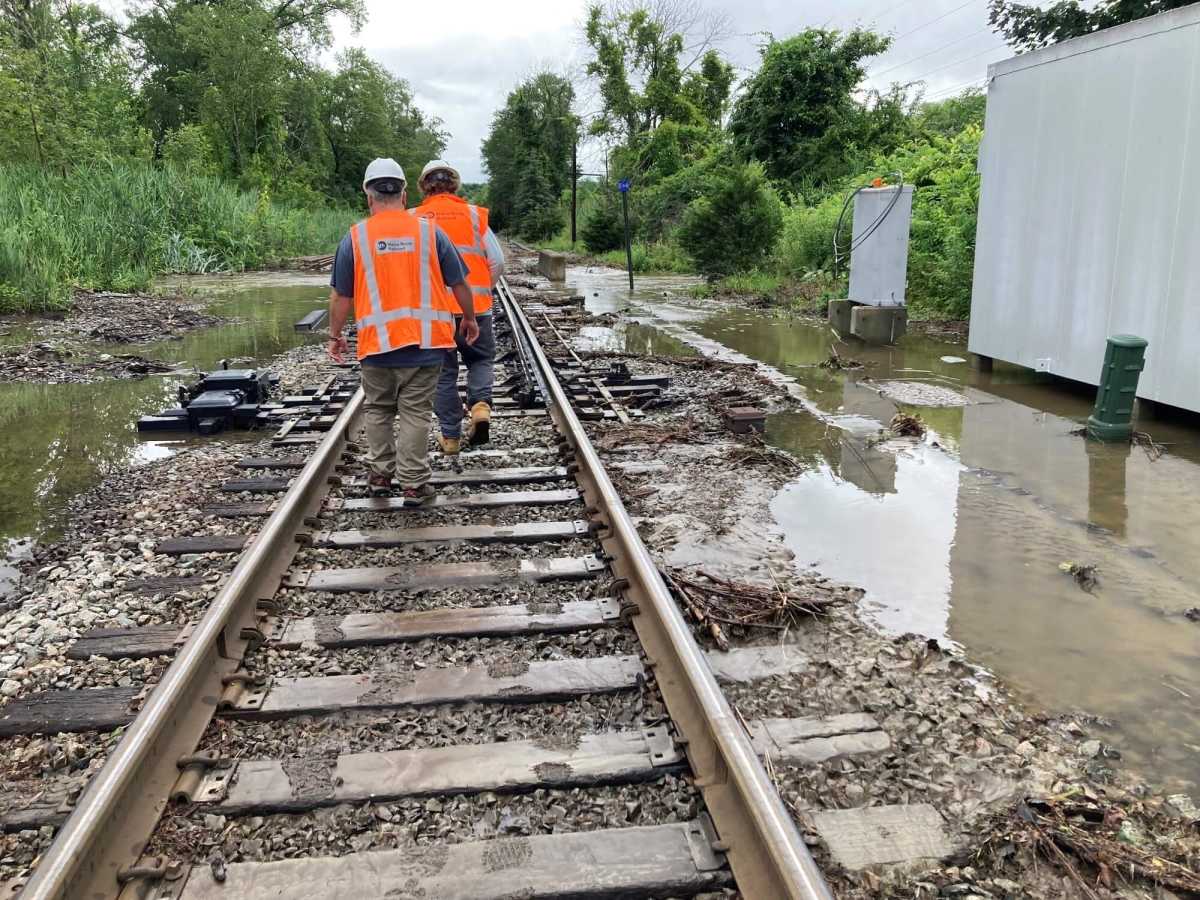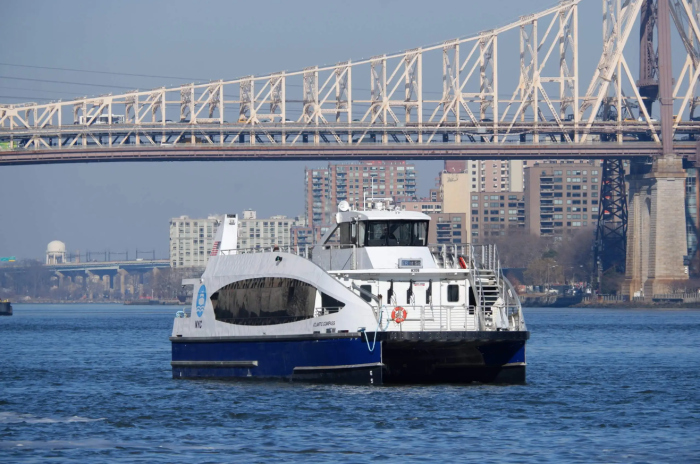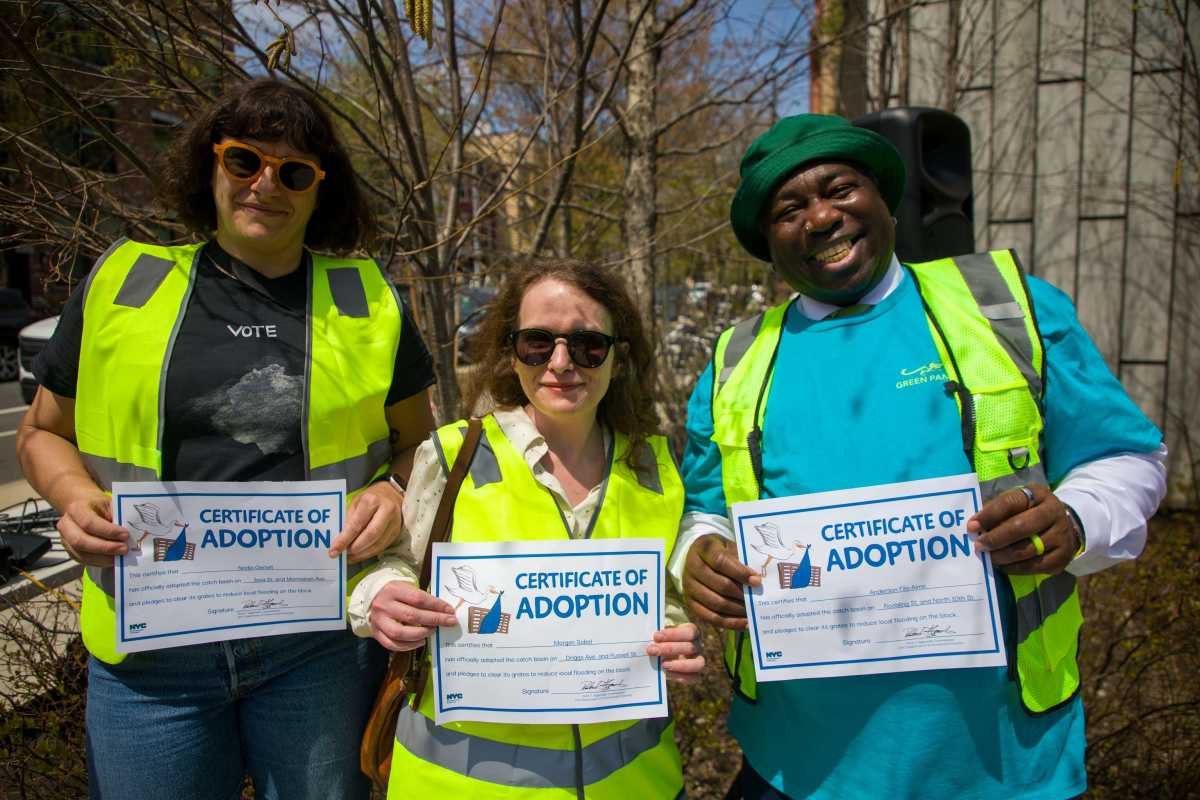Full passenger service has been restored on Metro-North and Amtrak following historic flooding in the Hudson Valley that shut down segments of railroad tracks.
Gov. Kathy Hochul and MTA chief Janno Lieber greeted Hudson Line customers arriving at Grand Central Terminal Wednesday and said that that line had been fully restored after being shut down for two days in its furthest reaches upstate, between Croton-Harmon and Poughkeepsie. Service has also been fully restored on the Harlem Line between Southeast and Wassaic.
The MTA was forced to shut down the northern segments of both lines following “thousand-year” flooding in the Hudson Valley earlier this week, which inundated the tracks with water, littered the rights-of-way with debris like boulders, fallen trees, and mud, and even washed away some stone foundations undergirding the rail lines.
Amtrak has also restored its service between Penn Station and Albany, which uses the Hudson Line tracks in its southern portion.

Crews worked around the clock to clear debris from the tracks and restore the stone ballasts that serve as foundations. Lieber noted that some workers even put in 24-hour shifts as part of the Herculean effort to restore service. Hudson Line service was restored Tuesday evening while Harlem Line service was up and running for the morning rush on Wednesday.

“For these lines to be open, the Hudson Line fully open now, Amtrak now fully open going all the way up to Albany, is nothing short of extraordinary,” Hochul said at Grand Central Terminal Wednesday morning. “This easily could’ve taken not just days, but weeks to be able to restore the full service. And as I saw on the faces of our commuters who are now back to work here in Midtown, they are so grateful of the extraordinary effort.”
One train with 300 passengers had to be evacuated on Sunday as a deluge of stormwater and debris inundated the Hudson Line, which is located immediately adjacent to its namesake Hudson River, Hochul said.

The MTA contracted with Yankee Line coach buses to provide partial bus service to affected commuters during the shutdown.
The storm pummeled upstate New York with up to nine inches of rainfall, washing away homes and leaving many roads impassable. One Orange County woman, 43-year-old Pamela Nugent, died after her home was damaged by falling boulders and she was swept away by the floodwaters as her traumatized fiancé looked on.
The storm then moved on to Vermont, where it wrought considerable destruction. The governor said that she has offered New York’s assistance to Vermont Governor Phil Scott.

As for the Empire State, the full extent of the damage is not clear, but Hochul said that she expects the total will surpass $35 million, making New York eligible for federal disaster relief.
Extreme weather events are becoming more frequent and more intense as the effects of climate change manifest on the planet, requiring costly efforts to fortify existing infrastructure.
“I cannot stand here and say this will be the last time that we have a weather event like we just went through,” the governor noted.





































